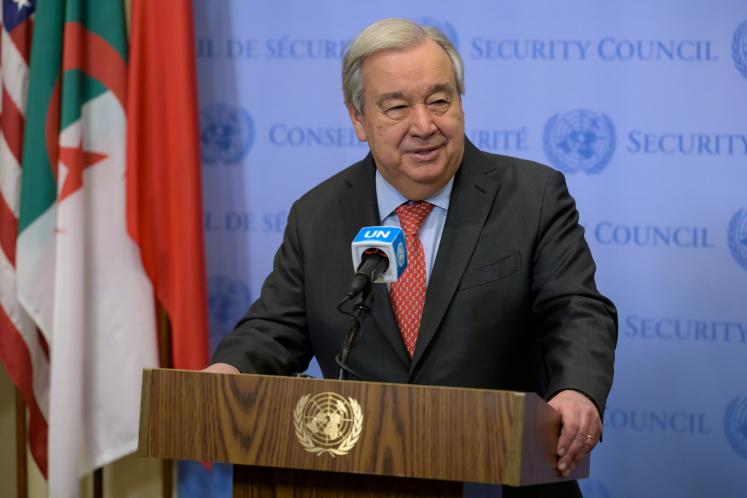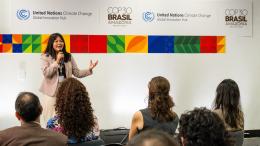This article was previously published in Geneva Solutions.
The UN is facing an existential crisis. Dramatic funding cuts by major donors, combined with the longstanding failure of many member states to pay dues in time, mean the organisation could run out of cash in months. Humanitarian agencies have already laid off thousands of staff, while programmes in some of the most fragile settings in the world have already been slashed. This is set to worsen in the coming months as the US is poised to impose even more drastic reductions, while Europe is shifting resources towards military defence.
Secretary-general António Guterres’s response to this crisis is the UN80 initiative aimed at finding immediate efficiencies, reducing duplications, reviewing mandate implementation, and rethinking the architecture and functioning of the UN system. This is an overdue and necessary process which could deliver a more nimble and effective organisation, as the secretary-general has proposed.
However, there is a risk that the liquidity crisis could render UN80 overly focused on quick wins, short-term efficiencies and low-hanging fruit.
It is difficult to think about the world’s needs in the next 35 years when you can’t pay salaries for the next three months. This dilemma between “the end of the month and the end of the world” has been faced by public institutions for decades. Short-term economic pressures often take precedence over the investments needed to address systemic challenges, leading to poor decisions with lasting negative impacts.
This leads to a critical choice: Will the UN reshape itself to meet the long-term challenges that define the coming century, or will it retrofit itself a cheaper, leaner version of existing tools? If UN80 is to succeed, it must resist the pressure to solve only the short-term crisis and instead try to reshape the multilateral system to solve what Oxford University academic and author Tom Hale has called “long problems”.
Long problems require long institutions
Long problems are challenges that unfold across decades and generations, where solutions require early investment, preventive strategies, sustained and coordinated global action, and institutional endurance. Think climate change and biodiversity loss, disaster risk reduction, global health, AI governance, demographic transitions, debt sustainability and nuclear nonproliferation. These are not issues that can yield to quick fixes, one-off summits or one budget cycle’s worth of efforts. They require institutions that can deliver across time, not just spreadsheets and weekly agendas.
Take the example of disaster risk reduction. The 2025 Global Assessment Risk Report argues that the global cost of disasters is more than $2.3 trillion already. The report concludes: “Just as the costs of disasters have been under-estimated, so have the benefits of investing now to reduce disaster risk.” As we breach an increasing number of planetary thresholds, we can only expect the costs of disasters to skyrocket. Investing now in long-term capacities to mitigate disasters – or even better, taking far more drastic climate action – will pay off big in the coming decades.
The growing number of long problems like this raises a key question: How do we make institutions anticipate, adapt and act effectively across long periods of time?
Four ways to move from efficiency to long-term capacity
UN80 already appears to have moved into a familiar logic of efficiency: merging agencies, cutting overhead and consolidating operations. While such moves may make the system leaner and potentially even more effective at some tasks, they do not necessarily make it more capable of addressing complex, intergenerational challenges like climate change, growing inequality and AI-driven transformations. Without a long-term focus, there is a danger that UN80 is driven by a logic of “new public management”, where a short-term focus on performance often results in greater long-term costs.
Instead, a more “streamlined” UN should also deliver a more strategic, resilient, adaptive organisation. This means UN80 should prioritise reforms that strengthen the UN’s ability to anticipate and shape global trends, rather than just respond to them. Crucial to this will be embedding strategic foresight, future generations’ representation and long-term stewardship across the system. Here, four steps could help the UN80 process avoid short-termism:
- Review mandates with an intergenerational equity lens. As UN80 moves into the review of the organisation’s mandates, there will be strong pressure to reduce, consolidate, end duplication and link mandates with resources. To be clear, these are important steps that are long overdue. But the review should also ask a forward-leaning question, rooted in principles of responsibility and accountability: Is this mandate preparing the UN to meet global risks over the next several decades? Who will benefit from these reforms, and who might be deprived? It would be especially helpful if these questions were directed by a UN special envoy for future generations, as proposed by Guterres.
- Institutional long-term adaptation. The UN has made important strides to bake foresight into its various agencies and plans, led by the newly created UN Futures Lab. The Declaration on Future Generations, adopted in September 2024, has articulated key principles to guide this work. UN80 should embed foresight and long-term principles into any new architectural design, asking: Can this structure anticipate, adapt and evolve to systemic shocks over the coming decades?
- Reimagine the UN as a steward. Long problems require continuity that can outlast political cycles, leadership changes and economic headwinds. If the UN we needed in 1945 was a forum to keep great powers from clashing, the UN we need in 2025 is a steward that can guide us to a sustainable, survivable, more equitable future. As UN80 reflects on the UN’s future shape, a critical question arises: Will this structure protect future generations from the irreversible consequences of our (in)actions?
- Invest in systems change. Taking a long view will help us avoid short-term benefits that mask long-term exponential costs. In fact, the UN Declaration on Future Generations encourages actors to consider intergenerational multiplier effects. For example, building systems that can anticipate and head off public health threats may not deliver immediate returns, but will save trillions if and when the next Covid-like threat comes. Investing in systems that reduce inequality globally and transform our current economic models is another example of long-term benefits we risk missing out on due to short-term national priorities. As UN80 envisions what functions are needed, it should pose a fundamental question: What systems can protect and deliver for us and the planet in the long term?
A strategic opportunity
While delivering immediate savings, the UN80 initiative should be more than an administrative tune-up. It is a rare opportunity to reflect on how the UN can adapt to be relevant for current and future generations. The real measure of effectiveness is whether the UN can help the world solve long problems before they become irreversible catastrophes. If UN80 takes that purpose seriously, it won’t just make the UN better; it will make it matter for people and the planet today and long into the future.




